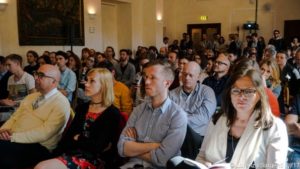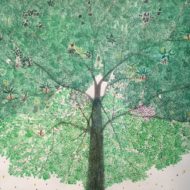Today saw the launch of A Field Guide to Fake News, a set of methodological recipes to explore the production, circulation and reception of fake news online. The field guide is the first project of the Public Data Lab, a new network of researchers working to facilitate research, engagement and public debate around the future of the data society. Claire Wardle of First Draft has been very supportive of the project from the very beginning and the field guide is produced in collaboration with First Draft.
The project was born out of an interest in “post-truth” politics and the rise of debates around fake news in relation to the US elections. The project is the result of a three-month collaboration between over 60 researchers, graduates and students at several universities in Europe through a series of “data sprints”. The data sprint is a short-form hands-on working format that convenes for a week participants from different backgrounds, including new media researchers, designers and issue experts, to collaborate around research projects. So far we’ve had sprints in Amsterdam, London, Copenhagen and Milan. We used this process to allow us to produce research that can respond in a timely way to a rapidly evolving phenomenon – as well as involving journalists, civil society groups, public institutions and others in the rapid co-production of research methods which speak to their interests and needs – while in the process challenging and enriching all of our different ways of seeing the issue.
The field guide doesn’t aim to produce findings or pictures of the phenomenon but to provide inspiration, points of departure and procedures for collective inquiry around fake news that can be used, adapted, modified and advanced by researchers, journalists, students and others who have an interest in the phenomenon. From this point of view, as we mention in the introduction, we have framed the guide as a kind of “recipe book”. What we hope to accomplish is not just to address the “big questions” that have emerged around this topic but – just as importantly – to open up space for rethinking them.

The launch event saw a full room gather at Hotel Brufani during the International Journalism Festival in Perugia. We would like to thank Chris Potter for hosting us again, in the same place, five years after the launch of the Data Journalism Handbook.
We were pleased to have on the panel Claire Wardle who supported this work and Craig Silverman from BuzzFeed News whom we worked with on an investigation around ad networks used by fake news sites.
We hope that the guide will serve as a source of inspiration for journalists and researchers who have an interest in this topic by suggesting some different approaches and fresh perspectives on the phenomenon. We hope that it will also serve as a teaching tool for journalism, media studies and digital culture courses.
Our presentation slides from the event can be found on SlideShare and a video recording from the event can be found on YouTube.
